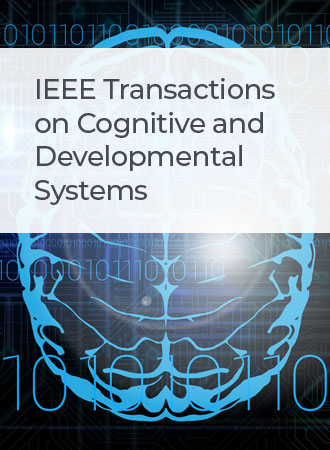Brain Connectivity Analysis for EEG-Based Face Perception Task
IF 5
3区 计算机科学
Q1 COMPUTER SCIENCE, ARTIFICIAL INTELLIGENCE
IEEE Transactions on Cognitive and Developmental Systems
Pub Date : 2024-02-27
DOI:10.1109/TCDS.2024.3370635
引用次数: 0
Abstract
Face perception is considered a highly developed visual recognition skill in human beings. Most face perception studies used functional magnetic resonance imaging to identify different brain cortices related to face perception. However, studying brain connectivity networks for face perception using electroencephalography (EEG) has not yet been done. In the proposed framework, initially, a correlation-tree traversal-based channel selection algorithm is developed to identify the “optimum” EEG channels by removing the highly correlated EEG channels from the input channel set. Next, the effective brain connectivity network among those “optimum” EEG channels is developed using multivariate transfer entropy (TE) while participants watched different face stimuli (i.e., famous, unfamiliar, and scrambled). We transform EEG channels into corresponding brain regions for generalization purposes and identify the active brain regions for each face stimulus. To find the stimuluswise brain dynamics, the information transfer among the identified brain regions is estimated using several graphical measures [global efficiency (GE) and transitivity]. Our model archives the mean GE of 0.800, 0.695, and 0.581 for famous, unfamiliar, and scrambled faces, respectively. Identifying face perception-specific brain regions will enhance understanding of the EEG-based face-processing system. Understanding the brain networks of famous, unfamiliar, and scrambled faces can be useful in criminal investigation applications.基于脑电图的人脸感知任务的大脑连接性分析
人脸感知被认为是人类高度发达的视觉识别技能。大多数人脸感知研究都使用功能性磁共振成像来识别与人脸感知相关的不同大脑皮层。然而,利用脑电图(EEG)研究人脸感知的大脑连接网络的工作尚未开展。在提议的框架中,首先开发了一种基于相关树遍历的通道选择算法,通过从输入通道集中剔除高度相关的脑电图通道来识别 "最佳 "脑电图通道。接着,在参与者观看不同的人脸刺激(即著名的、陌生的和乱码的)时,使用多变量转移熵(TE)在这些 "最佳 "脑电图通道中建立有效的大脑连接网络。我们将脑电图通道转换为相应的脑区,以达到概括的目的,并识别出每个人脸刺激的活跃脑区。为了找到刺激时的大脑动态,我们使用几种图形测量方法(全局效率(GE)和传递性)来估算已识别脑区之间的信息传递。我们的模型得出,著名人脸、陌生人脸和乱码人脸的平均 GE 分别为 0.800、0.695 和 0.581。识别人脸感知的特定脑区将加深对基于脑电图的人脸处理系统的理解。了解著名人脸、陌生人脸和乱码人脸的大脑网络有助于刑事调查应用。
本文章由计算机程序翻译,如有差异,请以英文原文为准。
求助全文
约1分钟内获得全文
求助全文
来源期刊

IEEE Transactions on Cognitive and Developmental Systems
Computer Science-Software
CiteScore
7.20
自引率
10.00%
发文量
170
期刊介绍:
The IEEE Transactions on Cognitive and Developmental Systems (TCDS) focuses on advances in the study of development and cognition in natural (humans, animals) and artificial (robots, agents) systems. It welcomes contributions from multiple related disciplines including cognitive systems, cognitive robotics, developmental and epigenetic robotics, autonomous and evolutionary robotics, social structures, multi-agent and artificial life systems, computational neuroscience, and developmental psychology. Articles on theoretical, computational, application-oriented, and experimental studies as well as reviews in these areas are considered.
 求助内容:
求助内容: 应助结果提醒方式:
应助结果提醒方式:


